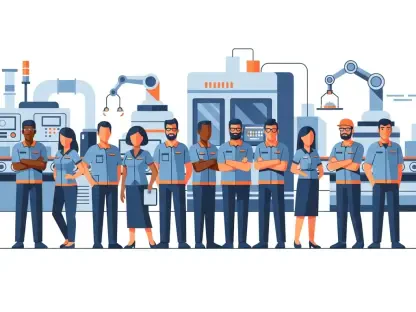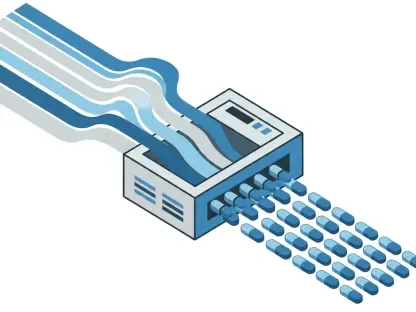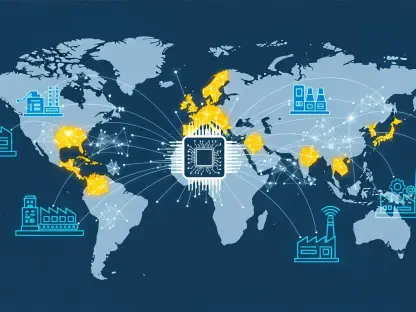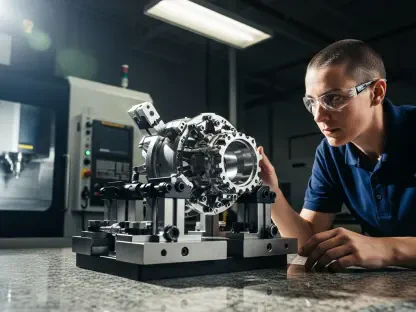Marie Waier sits down with Kwame Zaire, a renowned manufacturing expert known for his extensive work in electronics and equipment production management, as well as his thought leadership on predictive maintenance, quality, and safety. In this interview, he shares insights into the consistent excellence of Procter & Gamble (P&G) in the realm of supply chain management, highlighting the strategic and innovative approaches that have kept P&G at the forefront for over a decade.
How does P&G’s inclusion in Gartner’s Masters category reflect its long-term excellence in supply chain management?
P&G’s inclusion in Gartner’s Masters category truly speaks to their remarkable consistency and dedication to excellence in supply chain management. Being recognized as a Master indicates that P&G didn’t just achieve high performance for a year or two—they have sustained top-tier results over a significant period, proving their ability to adapt and evolve their strategies to meet changing market demands. Their focus on growth and innovation, encapsulated in their Supply Chain 3.0 strategy, shows why they continue to lead in the industry.
Could you explain what distinguishes the Masters category from the Top 25 in Gartner’s rankings?
The Masters category is unique because it highlights those companies that have consistently shown excellence over the years, unlike the Top 25, which can fluctuate annually based on short-term performance metrics. For companies like P&G to be included, they must rank among the top five for at least seven out of the past ten years, showing a solid track record of sustained excellence. This recognition demands not just strong financial and operational performance but also significant contributions to innovation and ethical practices.
What are the criteria for a company to be considered for the Masters category?
For a company to be considered for the Masters category, they must perform exceptionally well in a range of areas over a decade. This includes peer evaluations, expert opinions, financial metrics like revenue and cash conversion, as well as ESG factors and innovation levels. Companies distinguished in this category, like P&G, are evaluated separately from the Top 25, acknowledging their role in shaping and driving supply chain strategies globally.
How does P&G’s Supply Chain 3.0 strategy contribute to its successful supply chain management?
P&G’s Supply Chain 3.0 is at the heart of their supply chain success. This strategy is all about scale, adaptability, and total system integration, which allows them to operate efficiently across numerous markets. By focusing on these elements, P&G has built an approach that is both resilient and responsive, enabling them to manage complexity with discipline and energy across their vast team globally. It’s a blueprint for maintaining high standards while continuously pushing for growth and modernization.
In what ways has innovation played a role in P&G’s supply chain excellence?
Innovation is indeed a cornerstone of P&G’s excellence. They continually seek out new methods and technologies to improve their operations, whether through digital integration or developing more efficient processes. The use of automated planning systems, for instance, helps streamline product flow and improve demand forecasting, reducing manual interventions and fostering a more proactive, rather than reactive, approach to supply chain management.
How has P&G integrated digital systems into its supply chain operations?
Digital systems are crucial to P&G’s operations, allowing for seamless integration across networks and real-time data access to anticipate demand effectively. By leveraging digital tools, they enhance product flow and elevate their partnership capabilities with retail clients, ensuring a smooth and efficient supply chain. This digital enablement supports informed decision-making and organizational alignment, maintaining their high supply chain maturity.
Could you elaborate on the role of data-driven decision-making in P&G’s supply chain strategy?
Data-driven decision-making plays a pivotal role in P&G’s strategy, empowering them to harness real-time information, facilitating precise and timely decisions. This approach allows them to anticipate market changes and react swiftly, optimizing the overall operation and ensuring product availability while minimizing waste. Data is the glue that holds their complex supply chain systems together, enabling continuous improvement and efficiency.
How does P&G leverage automated planning systems to enhance product flow and demand forecasting?
Automated planning systems at P&G help streamline product flow by reducing the need for manual intervention, which can often lead to delays or inefficiencies. These systems use real-time data to create accurate demand forecasts, ensuring that products are available when and where they’re needed. This technological approach allows P&G to focus on strategic planning and execution rather than getting bogged down in operational minutiae.
What collaborations or partnerships have been crucial to P&G’s success in supply chain management?
Collaborations and partnerships are integral to P&G’s strategy for maintaining its supply chain leadership. By working closely with retail and logistics partners, P&G can ensure smooth communication and coordination across all aspects of the supply chain. These relationships enable innovation and expanded capabilities, fostering a collaborative ecosystem that supports mutual goals and drives forward collective advancements in supply chain efficiency.
How is P&G using AI and automation to improve its supply chain processes?
P&G leverages AI and automation to significantly enhance their supply chain processes by minimizing manual operations and improving real-time decision-making capabilities. AI systems can respond rapidly to changes, ensuring consistent product availability across global markets. This technology ensures that their operations remain agile and adaptive, providing the flexibility needed to meet consumer expectations effectively.
Can you provide specific examples of how AI has enabled agile responses to market changes for P&G?
Certainly. AI allows P&G to quickly scale operations and tweak processes based on market fluctuations. For instance, if a sudden change in demand occurs, their AI systems can immediately adjust supply levels across regions, maintaining product availability and quality without interruption. This responsiveness enables them to meet consumer needs promptly while optimizing inventory levels globally.
How important is sustainability in P&G’s supply chain strategy?
Sustainability is a key pillar of P&G’s supply chain strategy. They aim to reduce their environmental footprint while enhancing productivity. By integrating sustainable practices into every aspect of their operations, they not only meet regulatory requirements but also lead in responsible consumption and production. This commitment not only strengthens their brand but also aligns them with consumer values and expectations.
In what ways does P&G engage with retail and logistics partners to achieve its supply chain goals?
P&G engages closely with retail and logistic partners through shared goals and collaborative innovations. These partnerships enable them to synchronize operational capabilities, streamline processes, and improve overall efficiency. Such engagement also ensures mutual growth, as both P&G and their partners work together towards improving logistics and distribution networks to effectively meet market demands.
How does P&G ensure global product availability and quality?
Global product availability and quality are ensured through well-coordinated supply chain operations and robust digital systems capable of real-time data handling and automated adjustments. P&G’s strategy focuses on continuous monitoring and rapid adaptation to market changes. They also prioritize building a skilled workforce capable of executing their strategy with precision and a strong emphasis on quality standards.
What are some of the challenges P&G faces in maintaining its leadership in supply chain management, and how does it address them?
Maintaining leadership in supply chain management presents various challenges, including navigating global market changes, technological advancements, and increasing demands for sustainability. P&G addresses these by fostering a culture of constructive disruption and adaptability, constantly innovating their processes while engaging in collaborations that bolster their ecosystem’s capability to handle new challenges.
How does P&G’s approach to constructive disruption support its supply chain objectives?
P&G’s strategy of constructive disruption involves embracing changes and innovations that can challenge and improve existing systems. This mindset allows them to integrate new technologies and methodologies into their operations swiftly, promoting a culture of continuous advancement. It supports their supply chain objectives by fostering an environment where creativity and adaptation lead to sustained progress and efficiency.
Can you discuss the role of P&G’s corporate culture in sustaining its supply chain excellence?
P&G’s corporate culture is pivotal to its sustained supply chain excellence. Their culture promotes alignment, analytics-driven decision-making, and organizational support, ensuring every team member contributes to the overarching goals. With a focus on empowerment and agility, their workforce is motivated to engage in continuous improvement, championing innovation and maintaining the high standards expected at P&G.
How does P&G’s strategy for scale and adaptability contribute to its overall success in supply chain operations?
P&G’s approach to scale and adaptability is crucial for managing complex global supply chains. By prioritizing these elements, they can swiftly react to changes while efficiently scaling their operations to meet varied demands. This strategy underpins their ability to maintain high levels of service and product availability, ensuring ongoing success in their supply chain operations.
What is your forecast for the future of P&G’s supply chain strategy?
I foresee P&G continuing to lead with innovative initiatives and a strong focus on sustainability. As global demands evolve, their commitment to digital transformation and collaborative ecosystems will bolster their adaptability and response times. By integrating cutting-edge technology and fostering a culture of agility, P&G is well positioned to navigate future challenges while sustaining their leadership in supply chain management.









